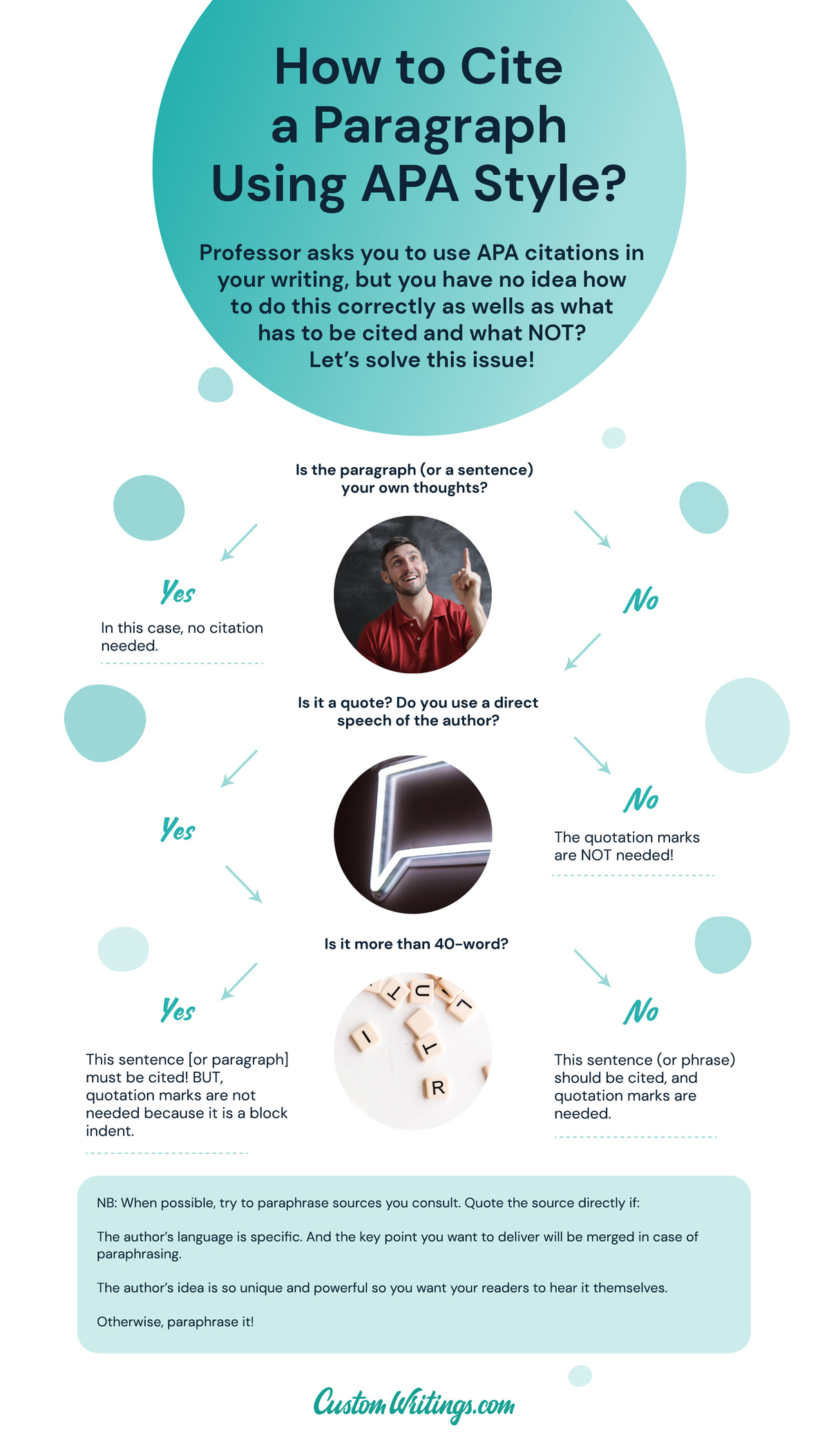
- #HOW TO PROPERLY CITE SOURCES IN APA BIBLIOGRAPHY HOW TO#
- #HOW TO PROPERLY CITE SOURCES IN APA BIBLIOGRAPHY MANUAL#
Sources by three or more authorsĬite all authors in the first reference, but only the first author followed by et al. Sources by two authors (Last name & Last name, publication year)Į.g., Margaret Laurence’s works feature strong religious symbolism (Marquez & Adams, 2007). In-text Citation Formatting for Different Kinds of Sources Sources by one author (Last name, publication year)Į.g., Dogs with webbed feet do not always enjoy water activities (Choy, 1999). Or, if you integrate the author in the signal phrase:Į.g., In her paper on the exceptionality of New York City, Penney (2010) observes that both Spiegelman’s and Foer’s texts mediate between different conceptions of trauma: individual and collective. Note that the period is placed to the right of the parenthetical citation (as it is for direct quotations under 40 words).Į.g., Ultimately, it is clear that there is space for opening up and understanding trauma if readers attempt to both listen and see the pain of others (Penney, 2010). Paraphrases use the (author, year) format. Helpful tip: Whether you are incorporating a long or short quotation into your work, it is important to write clear, well-integrated signal phrases that provide context for your quotation in order to transition from your writing and arguments to the quoted material.


Society invited him to dinner. (Barrie, 1911, p. Interviews appeared in the better class of papers, and Lustily charming girls scaled it to get his autograph Inward meaning of it leaked out, and the great heart of the It may have been quixotic, but it was magnificent.

The entire quotation is offset from the left margin (i.e., the entire quotation is “tabbed” in, as with the start of a paragraph).The period comes before the parenthetical citation.There are no quotation marks around the quotation.9).įor block quotations (long quotations of forty words or more), the structure of the parenthetical citation stays the same (author, year, page), but there are some formatting changes: Helpful tip: If you integrate the author’s name into the signal phrase, the citation will appear as follows:Į.g., In her paper on Art Spiegelman’s Maus and Jonathan Safran Foer’s Extremely Loud & Incredibly Close, Penney (2010) observes that New York City effectively functions both “as a domestic space and site of a violent event that is replete with fear and trauma, but also the potential for human connection” (p. The basic constructions for citations are as follows: Direct Quotations (Short)ĭirect quotations use the (author, year, page) format.Į.g., It is worthwhile to note that, for Spiegelman, the “active construction of nationalism” is one that is performed through his reflection on “the precise site of a violent event” (Penney, 2010, p.5). In APA format, in-text citations are required for both paraphrased and directly-quoted material. Where the citation appears depends on how you have structured your signal phrase. Follow the style guide as closely as possible while trying to make it easy for your reader to identify and find your research. Helpful tip: Sometimes sources will not have all the information you need (for example, an otherwise credible website may not have page numbers). You can consider the parenthetical citation to be a directional arrow to your reference list, helping your reader find your original source. However, using APA rigorously also helps you to become a part of your discipline’s community of practice: it places your work into conversation with the work of others, and it allows your readers to easily trace, find, and engage with the sources that you use in your own work.ĪPA requires that sources be documented in two places: in the body of the paper (parenthetical citations) and in the reference list (complete reference entries). Most obviously, it ensures academic integrity by requiring that you give proper credit to the thoughts, ideas, and words of other thinkers and researchers.

Using APA correctly serves a number of purposes.
#HOW TO PROPERLY CITE SOURCES IN APA BIBLIOGRAPHY MANUAL#
Or detail, refer to the Publication Manual for the American Psychological Association, 6th edition. However, APA style covers a number of writing and formatting conventions, including pagination, fonts, heading styles, and the ordering of paper sections.
#HOW TO PROPERLY CITE SOURCES IN APA BIBLIOGRAPHY HOW TO#
This guide explains how to provide in-text citations and reference entries for common types of sources. As an editorial style, APA is a good choice for those who would like their readers to be able to find sources of information easily. Printable version of APA Style Citation PDF.ĪPA is a reference and style guide most often used in the social sciences, including psychology, criminology, business, and sociology.


 0 kommentar(er)
0 kommentar(er)
